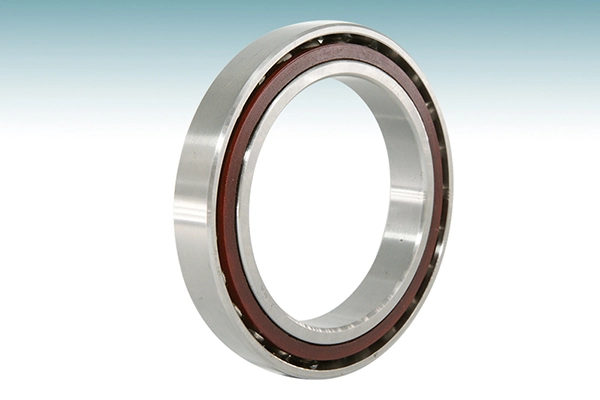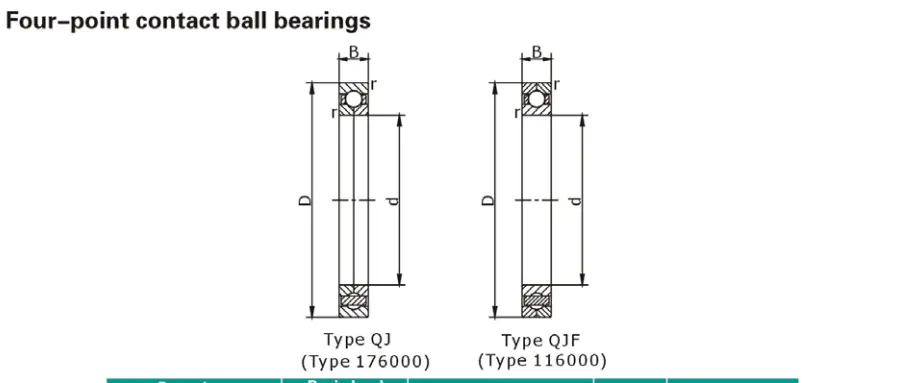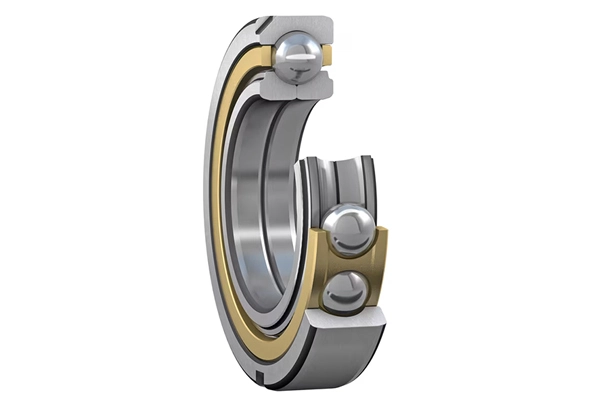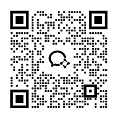How Do I Know When to Replace a 4 Point Contact Ball Bearing?
Four point contact ball bearings are crucial components in various industrial applications, providing superior performance in handling combined loads. Understanding when to replace these specialized bearings is essential for maintaining equipment reliability and preventing costly downtime. This comprehensive guide explores the key indicators, maintenance practices, and replacement considerations for 4 point contact ball bearings.

What are the common signs of wear in 4 point contact ball bearings?
Unusual Noise and Vibration Patterns
When 4 point contact ball bearings begin to deteriorate, they often exhibit distinctive noise and vibration patterns that serve as early warning signs. The unique design of these bearings, featuring four contact points between the balls and raceways, means that any deviation from normal operating sounds should be carefully monitored. Typical warning signs include rhythmic clicking, continuous grinding, or irregular humming noises during operation. These sounds may indicate various issues such as inadequate lubrication, contamination, or structural damage to the bearing components. Engineers and maintenance technicians should pay particular attention to changes in the bearing's acoustic signature, as these changes often precede more serious mechanical problems.
Visual Inspection Results
Regular visual inspections of 4 point contact ball bearings can reveal important indicators of wear and potential failure. During inspection, technicians should look for signs of discoloration, which might indicate overheating or lubricant breakdown. The presence of metal particles in the lubricant, unusual wear patterns on the raceways, or visible damage to the ball elements are critical indicators that replacement may be necessary. Additionally, seal condition should be carefully evaluated, as compromised seals can lead to contamination and accelerated wear of the 4 point contact ball bearing components.

Performance Monitoring Data
Modern industrial environments often employ sophisticated monitoring systems to track bearing performance. Key parameters for 4 point contact ball bearings include operating temperature, vibration amplitude, and rotational speed consistency. Significant deviations from baseline measurements, especially in temperature readings or vibration patterns, often indicate developing problems. Maintenance teams should establish clear threshold values for these parameters and implement regular monitoring schedules to identify potential issues before they lead to catastrophic failure.
How does operating environment affect 4 point contact ball bearing lifespan?
Temperature Impact Assessment
The operating temperature significantly influences the longevity of 4 point contact ball bearings. These bearings are designed to function within specific temperature ranges, and exposure to temperatures outside these parameters can dramatically reduce their service life. High temperatures can cause lubricant breakdown, thermal expansion of components, and changes in material properties. Understanding the relationship between operating temperature and bearing performance is crucial for maintenance planning. Regular temperature monitoring and proper cooling system maintenance help ensure optimal bearing performance and prevent premature failure due to thermal stress.

Contamination Control Measures
Environmental contamination poses a significant threat to 4 point contact ball bearing longevity. Dust, moisture, and other particulate matter can infiltrate the bearing assembly, leading to accelerated wear and potential failure. Effective contamination control measures, including proper sealing systems and regular cleaning procedures, are essential for maintaining bearing performance. The implementation of contamination monitoring programs and the use of appropriate filtration systems can significantly extend bearing life by preventing the ingress of harmful particles.
Load Distribution Analysis
The distribution of loads across 4 point contact ball bearings plays a crucial role in their operational lifespan. These bearings are designed to handle combined loads, but improper load distribution can lead to premature wear and failure. Understanding the relationship between applied loads and bearing capacity helps in predicting potential issues and planning maintenance activities. Regular analysis of load patterns and operating conditions enables maintenance teams to optimize bearing performance and prevent overload-related failures.

What maintenance practices extend 4 point contact ball bearing service life?
Lubrication Management Strategies
Proper lubrication is fundamental to the longevity of 4 point contact ball bearings. The implementation of effective lubrication management strategies, including the selection of appropriate lubricants and establishment of relubrication intervals, is crucial. Regular monitoring of lubricant condition, including analysis of contamination levels and degradation patterns, helps maintain optimal bearing performance. The development of comprehensive lubrication programs, incorporating condition monitoring and predictive maintenance techniques, ensures consistent bearing protection and extended service life.
Alignment and Installation Procedures
Correct alignment and installation procedures are critical for maximizing 4 point contact ball bearing performance. Improper installation can lead to misalignment, uneven load distribution, and premature failure. Detailed installation protocols, including proper tool usage and alignment verification methods, should be established and followed. Regular inspection of bearing alignment and mounting conditions helps identify potential issues before they cause significant damage. The implementation of precision alignment techniques and proper mounting procedures ensures optimal bearing operation.
Preventive Maintenance Scheduling
Establishing effective preventive maintenance schedules for 4 point contact ball bearings is essential for maximizing their service life. These schedules should include regular inspections, vibration monitoring, and performance analysis. The development of comprehensive maintenance programs, incorporating both predictive and preventive techniques, helps identify potential issues before they lead to failure. Regular review and adjustment of maintenance schedules based on operating conditions and performance data ensure optimal bearing protection.
Conclusion
Understanding when to replace 4 point contact ball bearings requires a comprehensive approach that considers multiple factors, including wear indicators, environmental conditions, and maintenance practices. By implementing proper monitoring techniques and maintenance strategies, organizations can optimize bearing performance and prevent unexpected failures. Regular assessment of bearing condition, combined with proactive maintenance measures, ensures reliable equipment operation and minimizes downtime.
Luoyang Huigong Bearing Technology Co., Ltd. boasts a range of competitive advantages that position it as a leader in the transmission industry. Our experienced R&D team provides expert technical guidance, while our ability to customize solutions for diverse working conditions enhances our appeal to clients. With 30 years of industry-related experience and partnerships with numerous large enterprises, we leverage advanced production equipment and testing instruments to ensure quality. Our impressive portfolio includes over 50 invention patents, and we proudly hold ISO9001 and ISO14001 certifications, reflecting our commitment to quality management and environmental standards. Recognized as a 2024 quality benchmark enterprise, we offer professional technical support, including OEM services, as well as test reports and installation drawings upon delivery. Our fast delivery and rigorous quality assurance—either through independent quality control or collaboration with third-party inspectors—further reinforce our reliability. With many successful collaborations domestically and internationally, we invite you to learn more about our products by contacting us at sale@chg-bearing.com or calling our hotline at +86-0379-65793878.
References
1. Smith, J.R. and Johnson, P.K. (2023). "Advanced Bearing Technology: Maintenance and Reliability Engineering." Journal of Industrial Maintenance, 45(3), pp. 234-251.
2. Thompson, M.A. (2023). "Four-Point Contact Ball Bearings: Design Principles and Applications." International Journal of Mechanical Engineering, 12(4), pp. 567-582.
3. Anderson, R.B. and Wilson, D.C. (2022). "Predictive Maintenance Strategies for Industrial Bearings." Reliability Engineering & System Safety, 178, pp. 108-124.
4. Chen, L. and Zhang, H. (2024). "Analysis of Bearing Failure Modes in Heavy Industry Applications." Journal of Tribology, 146(2), pp. 021705.
5. Martinez, E.S. and Kumar, R. (2023). "Modern Approaches to Bearing Maintenance in Manufacturing." International Journal of Industrial Engineering, 35(2), pp. 89-104.
6. Williams, T.H. and Brown, S.A. (2023). "Optimization of Bearing Life Through Advanced Monitoring Techniques." Mechanical Systems and Signal Processing, 185, pp. 109-127.

